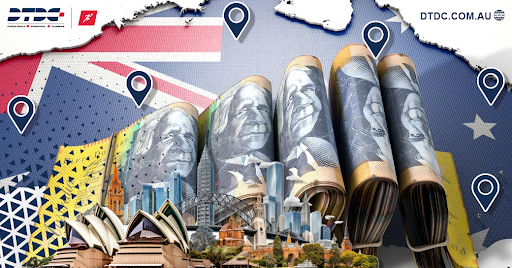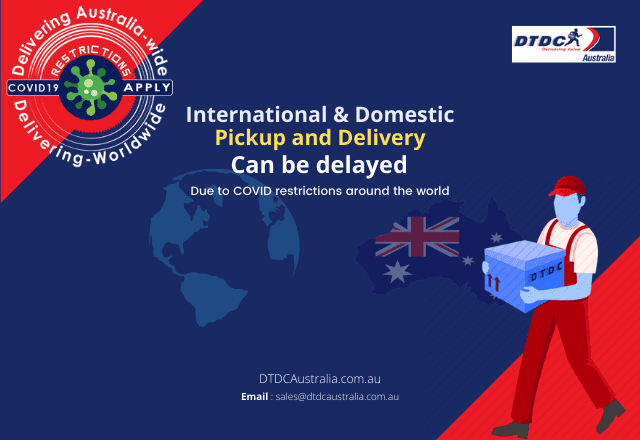Suresh received a call from his mother that his father was not well and he may be in his final months. After years of managing life in Sydney, Suresh decided that it was finally time to go back home. Because of the impending illness of his father, Suresh was keen on reaching India as soon as possible without any complications. But his expectations were ruined when he came to know about the reality of shipping to India from Australia, especially when it came to dealing with custom duty on personal items in India.
Let’s go through the case of Suresh to see what went wrong for him and the learnings from his case that can be useful for people coming back to India like you. Each section analyses the different problems faced by Suresh and our solutions to how to tackle them.
What No One Tells You About Custom Duty on Personal Items in India
As per the Indian customs regulations, every import is taxable by default, even if they are used items. The customs in India calculate the depreciated value of the products and then tax the item as per the product category. At the time of writing this article, the customs duty on personal items in India is 78%.
This is a high custom duty rate that can significantly increase the cost of shipping to India from Australia. For instance, Suresh was shipping AUD 1000 worth of personal items to India and would have had to pay customs duty of AUD 780.
As an NRI returning to India, Suresh understood the customs duty, but was confused by the term “personal effects”.
What are Personal Affects As per Indian Customs?
Personal Affects are defined as the things that are necessary for the fulfilment of the daily needs of a person. The circular that defines personal effects was released in 1998, and this is outdated. So it would be better to get in touch with your shipping partner to know whether your used items classify as personal effects. Some examples of personal effects are:
- Camera
- Mobile phone
- Binoculars
- Computer
Only one quantity of all these items will be classified under personal effects. Items that go over this limit will be subject to custom duty and other charges.
But customs duty was not the only charge that Suresh had to pay for shipping household goods from Australia to India.
Is Customs Duty the Only Charge To Be Paid for Custom Clearance?
The custom duty on personal items in India consists of several categories of duties such as Basic Customs Duty (BCD), Integrated Goods and Services Tax (IGST), Anti-Dumping Duty (ADD) and Safeguard Duty. Each of these duties is calculated on the basis of the determined product value, and the application of each duty is necessary for the customs clearance process.
BCD is the main duty applicable to personal items brought to India from Australia, and the duty depends on the type of product. IGST is basically a tax on the combined value of goods and the BCD. In addition to this, a compensation cess is levied to recover losses for specific states that occur due to IGST implementation.
ADD is created to protect domestic industries by imposing a duty on the goods that are dumped below their current value. Safeguard duty also serves a similar purpose by protecting the local industries from sudden import surges.
But how is this customs duty determined? Are there any specific guidelines in action?
How Customs Duty Is Determined?
Just like Suresh, this is one area most of you will be confused about. Only after knowing this can someone correctly estimate the shipping cost from Australia to India. Determination of the custom duty on personal items in India heavily depends on the classification of goods. The Indian customs uses the Harmonized System (HS) code for this purpose.
The HS code is a global standard developed by the World Customs Organization, and India has adopted it with the eight-digit classification. You can seek the help of your shipping partner or contact Indian customs directly to get the HS code of your products. Just make sure that each of your product are specifically aligned with their HS codes to get clear from customs.
So does this mean every personal item brought to India is subject to a customs duty?
Different Channels for Bringing Personal Items
The Indian customs do recognise the importance of personal effects, and that’s why different customs channels were created. A two-channel system has been implemented, called green and red.
- Green: Passengers without any dutiable personal effects can go through this channel
- Red: Passengers with goods that exceed the duty-free limit must use this channel.
Opting for the green channel with dutiable goods will lead to prosecution, penalty and confiscation of goods.
But what if the passengers have to bring their personal items as a separate shipment? This was the main issue faced by Suresh as an NRI returning to India, as there were a lot of items that could not be covered under baggage.
Using Cargo To Ship Personal Items to India
Unaccompanied baggage of personal items can be imported free of duty under the prescribed limits. But items that do not come under personal effects will not have any allowance. Customs duty and other charges have to be paid for this baggage.
The unaccompanied baggage must be in possession of the passenger overseas, and it should be dispatched within one month of the passenger’s arrival. The baggage may arrive up to 2 months before the arrival of the passenger or within the given period. If further extensions are required, the passenger can contact the Deputy/Assistant Commissioner of Customs.
In order to save money on customs duty and get clear from customs, make sure that the items you are sending are recognised as personal items. And also, custom duty on personal items in India is also subject to quantity limits.
Do You Qualify for Duty-Free Exemptions?
Duty-free exemptions are provided based on the category of passenger bringing the personal items to the country. A resident means a person having a valid Indian passport, and a resident can bring personal items valued up to Rs 45,000 without paying any duties.
Suppose the passenger is a professional coming back to India just like Suresh, then there are many more options for availing custom clearance free of duty. The valuation limit of the personal effects depends on the period of stay of the professional in Australia.
- At least 3 months: Used household items up to Rs 12,000 and professional items up to Rs 20,000.
- At least 6 months: Used household items up to Rs 12,000 and professional items up to Rs 40,000.
- More than one year: All used household items and personal effects (used for at least 6 months in Australia).
In case of personal effects, Suresh also had to bring back jewellery, but had to pay customs duty for it.
Is Used Jewellery Also Duty-Free Since It Is a Personal Effect?
Residents coming back to India after one year in Australia can bring jewellery duty-free into the country, but only as baggage. Gentleman passengers can bring jewellery up to a value of Rs 50,000, and for lady passengers the limit is Rs 1,00,000.
We have discussed in detail about the permitted goods, but what about the goods that are not allowed into the country?
What Are the Restricted Personal Effects?
There are some personal effects which face strict restrictions on being brought into the country, and some others that are entirely prohibited. For instance, Suresh had to sell his firearms before coming back to the country as they were strictly prohibited from being imported. Import of more than 50 cartridges is also prohibited.
Items that face restriction are cigarettes, tobacco items and alcoholic drinks. Cigarettes exceeding 100 quantity and tobacco exceeding 125 gms will have to pay custom duty on personal items in India. Similarly, alcoholic drinks in excess of 2 litres also have to pay custom duty along with an education cess for the customs clearance process.
But the restrictions on firearms and cigarettes don’t bother Suresh. What he was more concerned about was his pet dog Tommy.
How To Import Pets While Shifting to India?
Pets can be imported into India with up to 2 pets per passenger. This is only allowed for passengers shifting back to India. So, in order to prove this, you should have a valid Indian passport and a one-way ticket to India. Additionally, the pets will be considered as baggage and passengers with at least two years of continuous residence in Australia can avail of this scheme.
You are also required to provide the health certificate of the pet from the country of origin. Examination of the pet by an animal quarantine officer is also necessary.
Suresh is one among the hundreds of customers that we at DTDC Australia have successfully assisted to import their personal items. From cases like these, we have identified some tips and common mistakes that can help you in making better decisions.
Tips That Can Save Your Money
Properly determine relevant duties: Dictate the correct duty for all your personal items by referring to the customs tariff schedule and the CBIC website. This will help in the accurate estimation of your shipping cost from Australia to India.
Ensure personal affect status: Make sure to properly classify your used items into personal effects or normal items.
Consider duty concessions: Use duty-free benefits and try to maintain the prescribed limits for your personal items.
Proper documentation: Through proper documentation, you can escape additional charges and penalties that can happen.
Choose a reputable shipping partner: Most of the challenges with customs can be solved by an experienced shipping agency. Express customs clearance is offered by agencies like DTDC Australia.
Moving Back to India With DTDC Australia
The case of Suresh has provided us with the details of custom duty on personal items in India. Many options are available to avail yourself of the duty-free on your personal effects. But there are also many traps that can result in loss of money or even loss of your belongings.
Shipping household goods from Australia to India is not an easy task, and customs duty should not add further complications to your shifting. That’s why expert shipping partners like DTDC Australia have designed streamlined services to assist you in every step. We intend to simplify the customs clearance process and save your total cost by providing express customs clearance.
To know more, talk with our customer executive or get a personalised quote for your shipment.













